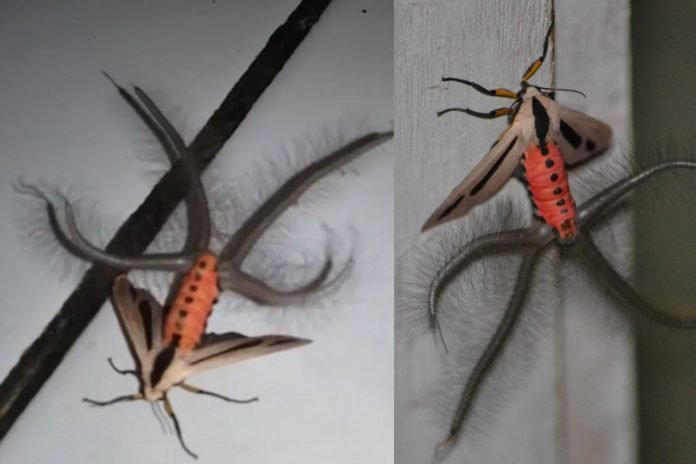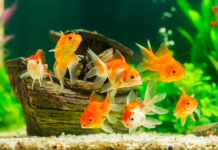Last Updated on July 11, 2023 by
Table of Contents
Why Can Bugs Be So Scary?
Bugs are one of the most common fears out there and for good reason. These tiny creatures can be incredibly unsettling, with their many legs, sharp pincers, and erratic movements. For some people, thinking of a spider or a roach can cause a full-blown panic attack. But why are bugs so scary? There are a few reasons. First of all, we’re hard-wired to fear things that might threaten us, and for much of human history, scary bugs were some of our biggest enemies. Mosquitoes and ticks could spread deadly diseases, while venomous spiders and insects could cause painful bites and stings. Our brains have evolved to be on high alert around these tiny creatures, even though most bugs today are harmless.
The Importance of Understanding Your Fears: Why Knowing About Scary Bugs Can Help You Overcome Phobias?
If you’re afraid of bugs, avoiding them at all costs can be tempting. But avoiding your fears isn’t always the best approach. Sometimes, the best way to overcome a phobia is to face it head-on. That’s where understanding comes in. By learning more about the bugs that scare you, you can start to demystify them and take away some of their power. For example, if you’re afraid of spiders, you might read up on their behavior and learn about the types of spiders in your area. You might even seek opportunities to see spiders up close, such as visiting a zoo or a butterfly exhibit. Over time, this exposure can help desensitize you to your fear and make it easier to cope with bugs.
Spiders: The Ultimate Creepy Crawly
Spiders are one of the most common fears out there, and it’s not hard to see why. These arachnids can be incredibly unsettling with their many legs, sharp fangs, and beady eyes. But despite their scary reputation, most spiders are harmless to humans. Spiders are essential to our ecosystem, as they help control other insect populations.
Still, there are some spiders out there that can pose a real danger to humans. The black widow, for example, has venom that can cause muscle cramps, spasms, and even death in some cases. The brown recluse spider, meanwhile, can cause a nasty, ulcerous wound if it bites you. If you’re afraid of spiders, it’s important to remember that most of them are harmless and serve an essential role in our world. At the same time, it’s always a good idea to be cautious around spiders that you don’t recognize, especially if they’re in your home or backyard.
Ants: The Tiny Insects with a Big Bite
Ants might seem harmless enough, but don’t be fooled. These tiny insects can pack a big punch, especially if you cross paths with a colony of fire ants. Fire ants are known for their painful bites, which can cause blisters, swelling, and even anaphylaxis in some cases. But fire ants aren’t the only ants out there that can be dangerous. Army ants, for example, are known for their aggressive behavior and ability to strip entire areas of vegetation and wildlife. Meanwhile, bullet ants have one of the most painful bites in the world, earning them the nickname “the 24-hour ant” because of the intense pain that can last a full day after the bite. Despite their reputation, however, ants are generally harmless to humans and are actually quite fascinating to study.
Mosquitoes: The Insects That Can Make You Sick
When it comes to scary bugs, mosquitoes might not be the first thing that comes to mind. But these tiny insects can pack a big punch, especially when spreading disease. Mosquitoes are known for transmitting several serious illnesses, including malaria, dengue fever, and the Zika virus. These diseases can be deadly, especially in parts of the world where access to medical care is limited. However, even in places where these diseases are less common, mosquitoes can still be a nuisance. Their itchy bites can be incredibly annoying; some are even allergic to mosquito bites. To protect yourself from mosquitoes, it’s important to use insect repellent and avoid spending time outside during peak mosquito hours, typically around dawn and dusk.
Cockroaches: The Ultimate Creepy Crawly
Few bugs are as universally reviled as the cockroach. This creepy crawlies are often associated with filth and disease, and for good reason. Cockroaches carry some bacteria and viruses and can trigger allergies and asthma in some people. But while cockroaches might be gross, they’re also incredibly fascinating. These insects have been around for millions of years, and they’re incredibly adaptable, able to survive in a wide range of environments. Some species of cockroaches have even been known to survive in outer space! Of course, that doesn’t mean you want them in your home. To keep cockroaches at bay, keeping your home clean and free of crumbs and other food debris is essential. You should seal any cracks or gaps in your walls or floors, as cockroaches can squeeze through tiny spaces.
Read more: Ticking Your Pest Control Boxes: 7 Ways to Naturally Repel Ticks From Your Home
Bees and Wasps: The Insects That Can Pack a Punch

Bees and wasps might seem harmless enough, but these insects can be hazardous if you get on their wrong side. Bees are known for their painful stings, which can be life-threatening in some cases if you’re allergic to bee venom. Wasps, meanwhile, are more aggressive than bees and can sting multiple times. They’re also known for building nests in inconvenient places, like inside walls or under your porch. Despite their reputation, bees and wasps are important pollinators and play an essential role in our ecosystem. If you want to avoid getting stung by these insects, it’s necessary to be cautious around their nests and to avoid wearing brightly colored clothing or strong perfumes, which can attract them.
Scorpions: The Stinging Arachnids
Scorpions might not be as common as some other bugs on this list, but they’re still plenty scary. These arachnids are known for their painful stings, which can cause swelling, numbness, and even paralysis in some cases. Scorpions are found in many parts of the world but are most common in arid and desert regions. They’re typically nocturnal and often hide in dark, cool places during the day. While most scorpion stings are relatively harmless, some species can be deadly. This might include shaking out your shoes before putting them on, wearing protective clothing, and keeping your home free of clutter and debris.
Spiders: The Eight-Legged Terrors
Spiders might be one of the most common fears, but not all are created equal. While some species can be dangerous, most spiders are harmless to humans. That being said, spiders are still plenty scary, with their eight legs and multiple eyes. Some species are also known for their venomous bites, which can cause a range of symptoms from mild itching and swelling to severe neurological damage. The black widow spider, for example, is one of the most venomous spiders in the world and can cause muscle spasms, seizures, and even death in some cases. Despite their reputation, spiders are essential to our ecosystem and are important in controlling insect populations. If you’re worried about spiders, keeping your home clean and clutter-free is necessary, as spiders are attracted to dark, damp places.
Bed Bugs: The Blood-Sucking Parasites
Bed bugs might not be as dangerous as others on this list, but they’re still plenty scary. These tiny insects are notorious for their ability to infest homes and hotels, hiding in mattresses and other furniture and feeding on human blood while you sleep. Bed bug bites can be incredibly itchy and can cause a range of symptoms, including redness, swelling, and even an allergic reaction in some cases. But the real problem with bed bugs is their ability to spread quickly and their resilience to many typical insecticides. If you suspect that you have bed bugs in your home, it’s essential to act promptly to prevent the infestation from spreading. This might include washing your bedding and clothing in hot water, vacuuming your home thoroughly, and hiring a professional exterminator to treat your home.
Termites: The Silent Destroyers
Termites might not be as scary as some of the other bugs on this list, but they’re still plenty dangerous. These tiny insects are known for their ability to infest homes and buildings, causing thousands of dollars in damage. Termites feed on wood and can consume massive amounts of it quickly. The problem is that they do their damage silently, often going unnoticed until it’s too late. If you suspect a termite infestation in your home, acting quickly to prevent further damage is essential. This might include hiring a professional pest control company to inspect your home and treat any found infestations.
Ticks: The Blood-Sucking Parasites That Can Make You Sick
Ticks might be small, but they’re certainly not harmless. These blood-sucking parasites are known for their ability to transmit several serious illnesses, including Lyme disease, Rocky Mountain spotted fever, and Ehrlichiosis. These diseases can cause various symptoms, from mild flu-like symptoms to severe neurological damage. The problem with ticks is that they’re often tricky to spot and can attach to your skin without realizing it. To protect yourself from ticks, it’s essential to wear long sleeves and pants when you’re in wooded or grassy areas, use insect repellent, and check yourself thoroughly for ticks after spending time outdoors.
Mosquitoes: The Blood-Sucking Pests That Can Transmit Disease
Mosquitoes might be tiny, but they’re certainly not harmless. These blood-sucking pests are known for their ability to transmit many serious illnesses, including malaria, Zika virus, and West Nile virus. These diseases can cause various symptoms, from mild flu-like symptoms to severe neurological damage. Mosquitoes are often found in areas with standing water and are most active during dawn and dusk. To protect yourself from mosquitoes, it’s important to use insect repellent, wear long sleeves and pants outdoors, and eliminate any standing water around your home. You can also use mosquito nets around your bed to prevent bites while sleeping.
A Quick Overview
- Scary bugs can be found worldwide and come in many shapes and sizes.
- Spiders are one of the most common scary bugs, but most species are harmless to humans.
- Some spiders, such as the black widow and brown recluse, are venomous and can cause serious health problems.
- Bed bugs are a common problem in hotels and homes, and their bites can be very itchy and uncomfortable.
- Bees and wasps are important pollinators but can also be dangerous if allergic to their stings.
- Fire ants are a type of ant that can deliver painful stings, and they’re often found in warm, humid areas.
- Centipedes are a type of arthropod that can deliver painful bites, and some species are venomous.
- Cockroaches are scavengers that can spread disease and contaminate food and surfaces in homes and kitchens.
- Mosquitoes are blood-sucking pests that can transmit some severe illnesses, including malaria and the Zika virus.
- Wearing long sleeves and pants, using insect repellent, and checking for ticks are all essential ways to prevent bites and infestations.
- If you suspect a spider, tick, or cockroach infestation in your home, it’s crucial to take action quickly to prevent the problem from worsening.
Apart from this, if you are interested to know more about DIY Methods For Rat Pest Control then visit our Home improvement category.
FAQs (Frequently Asked Questions)
Spiders, bed bugs, bees, wasps, fire ants, centipedes, ticks, cockroaches, and mosquitoes are all common types of scary bugs.
No, most spider species are harmless to humans. However, some species, like the black widow and brown recluse, are venomous and can cause serious health problems.
If you find a tick on your skin, you should remove it as soon as possible using fine-tipped tweezers. Hold the tick as close to your skin as possible and gently pull it out straightly. After that, wash the bite area with soap, water, and rubbing alcohol.























